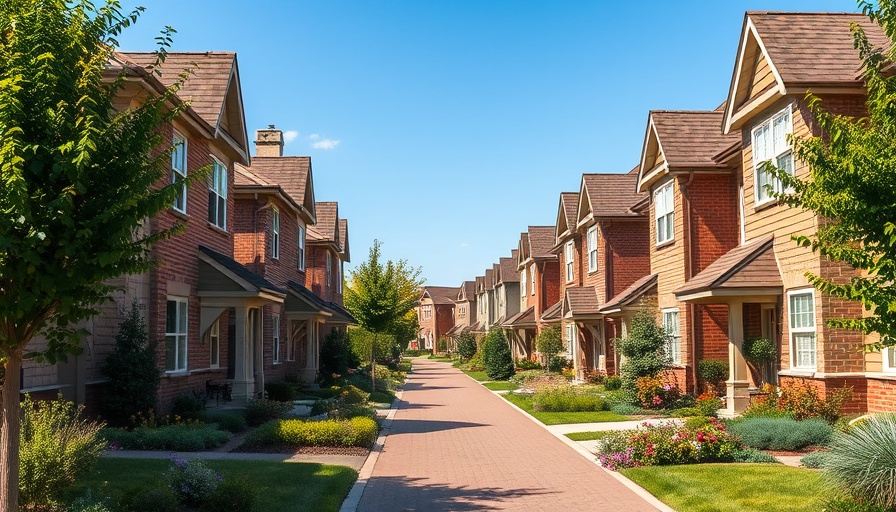
Understanding Bedroom Communities: A New Frontier for Professionals
For commuters seeking a harmonious work-life balance, bedroom communities offer an appealing blend of residential calm and major city access. Easily defined, a bedroom community is a residential area primarily populated by individuals who work in nearby urban centers. These communities, often referred to as commuter towns, have surfaced as viable solutions for families and professionals desiring less bustle than what larger cities can provide. As such, they are increasingly recognized for their distinct advantages and lifestyle benefits.
Defining Characteristics of Bedroom Communities
Unlike typical suburbs, which might be located just on the outskirts of a city, bedroom communities often lie further away in more rural settings. The primary inhabitants are generally commuting parents living in spacious single-family homes, which are more comfortable for family living than smaller apartments or townhomes traditionally found in urban centers. Desirable traits include lower crime rates, decent schools, and a peaceful ambiance, although residents may face fewer dining, shopping, and entertainment options compared to those available in a bustling city environment.
The Rise of Bedroom Communities: Historical Context
The post-World War II era ushered in significant demographic shifts that transformed living preferences. As families expanded, many sought refuge from the crime and overcrowding characterizing urban life at the time. With the proliferation of automobiles, the possibility of commuting from far-off residential areas became a reality. Thus, bedroom communities began emerging across the United States, primarily catering to this new ideal of suburban living.
Advantages of Living in a Bedroom Community
Embracing the lifestyle of a bedroom community comes with several compelling advantages:
- Cost of Living: Generally, the cost of living in these communities is lower than in major metropolitan areas, allowing families to afford larger homes without overeating their fiscal resources.
- Better Quality of Life: A quieter ambiance and lower crime rates often contribute to a greater sense of community and safety.
- Good School Systems: Many bedroom communities prioritize education, providing families with schools that boast higher performance metrics compared with those in urban settings.
While the lifestyle suits many, potential drawbacks exist, including limited access to public transport and fewer local conveniences, which might be disadvantageous for some.
Potential Drawbacks to Consider
Life in a bedroom community is not without its challenges. For instance, a significant commute may be inevitable as residents often travel to urban centers for work, which can lead to longer working hours and less personal time. Furthermore, the quieter lifestyle can sometimes be seen as monotonous, especially for those used to the vibrant activity of a city. Additionally, the lack of diverse cultural experiences that urban areas often offer can be a downside for some individuals.
Future Trends: Is the Bedroom Community Here to Stay?
As more people seek flexible work arrangements, including remote work options since the onset of the pandemic, the popularity of bedroom communities might see an uptick. These areas can provide a comfortable lifestyle while still permitting access to urban job markets. With real estate prices soaring in cities, many may find bedroom communities to be a more attainable option for budding families.
Making the Move: What to Consider
Before deciding to relocate to a bedroom community, potential homebuyers should assess their priorities. Do you value the ability to commute or the need for local conveniences? Understanding what lifestyle you wish to adopt is vital. Engaging with local real estate agents can also assist in navigating the various housing options available, from houses for sale to apartments for rent.
Call to Action: Discover Your Perfect Bedroom Community
Considering the benefits and potential drawbacks of bedroom communities, it’s crucial to conduct thorough research. Explore various online real estate platforms like Redfin and Zillow to find the right neighborhood that suits your lifestyle needs. By working with skilled realtors and exploring local listings, you can validate your housing choices and find a community that aligns with your aspirations.
 Add Row
Add Row  Add
Add 



Write A Comment